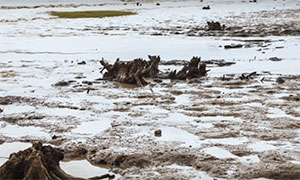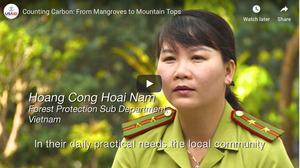|
The MAP News
471st Edition June 22, 2019 |
|
FEATURE Empowering CBEMR Ambassadors and Strengthening the MAP CBEMR Network  THAILAND - The Mangrove Action Project (MAP) has been promoting and working on Community-Based Ecological Mangrove Restoration (CBEMR) with coastal communities along the Andaman Coast since 2012. A group of communities have gathered together as an informal network calling themselves the “CBEMR Network”. On the 20th to 22nd of April, 2019 the second workshop on “public speaking and presentation skills” was held in Krabi Province for fifteen CBEMR ambassadors from five of MAP’s CBEMR communities representing three provinces in Southern Thailand: Trang, Krabi and Phang-Nga. The three day workshop was facilitated by a professional instructor, Khun Wara Chaitap, from Chiang Mai. This training was a follow up workshop for the Facilitation Skills workshop held in May 2018. The workshop aimed to strengthen the participants’ skills on how to share and present CBEMR experiences and lessons learnt with outsiders especially from the government sector. As most of the CBEMR community representatives regularly host and attend meetings and workshops, there are opportunities for them to deliver their experiences confidently. MAP believes that it is a very important strategy for local peoples’ voices to be heard and their role to be recognized not only through their practices but also through their presentations when they have opportunities. READ MORE GLOBAL Can planting billions of trees save the planet? 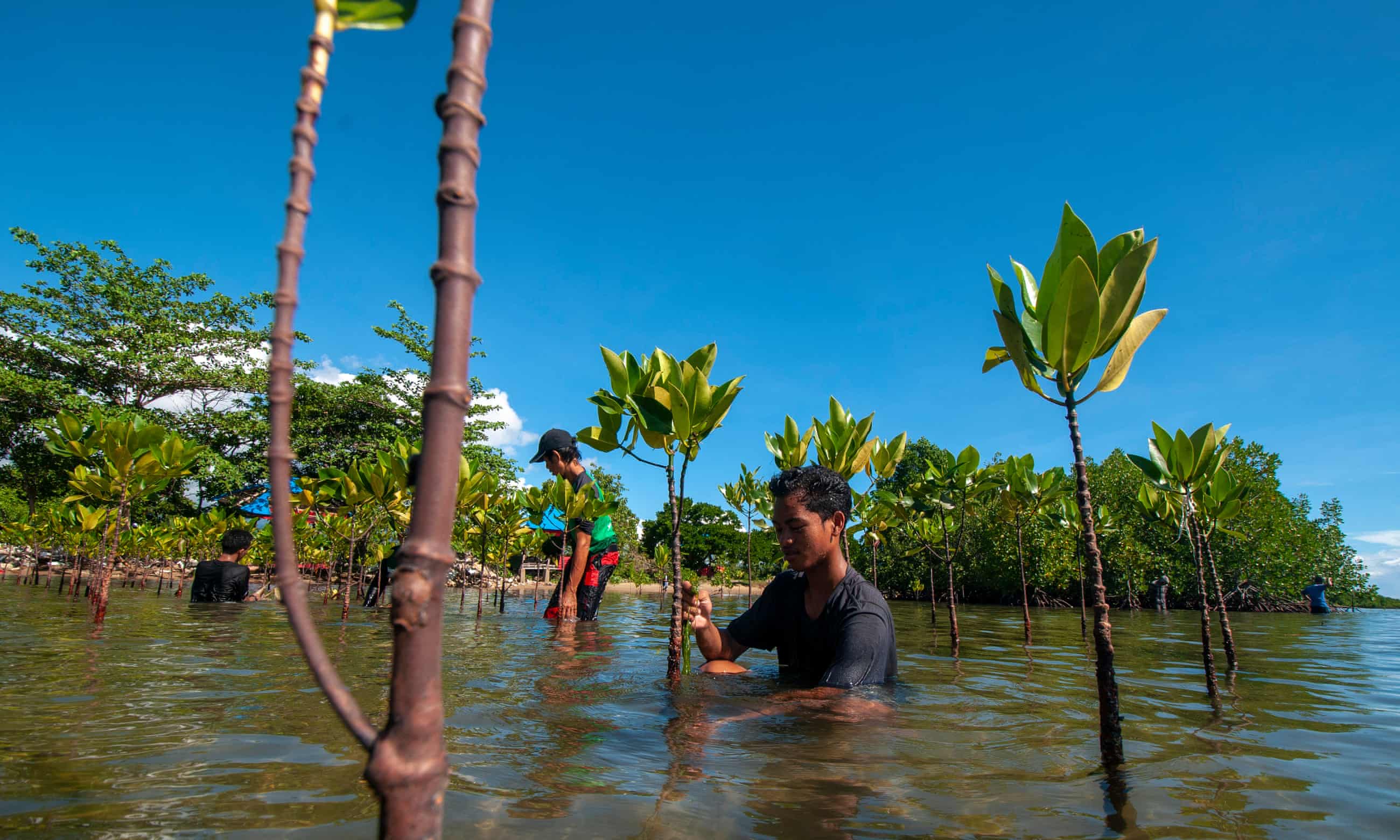 GLOBAL - Organisations from around the world are reforesting at an unprecedented rate. The global elite is embracing tree-hugging rhetoric. It is as if the world has suddenly woken up to the restorative powers of plants. Forests can stop runaway global heating, encourage rainfall, guarantee clean water, reduce air pollution, and provide livelihoods for local people and reserves for rare wildlife. Politicians are waking up to the potential of “natural climate solutions” – reforestation and other ecological restoration – to capture carbon and tackle the climate crisis. Such solutions could provide 37% of the greenhouse gas mitigation required to provide a good chance of stabilising global heating below the critical 2C threshold. But it isn’t as simple as just grabbing seeds and saplings and sticking them in the ground. Non-native plantations can cause problems for biodiversity, local livelihoods – or both. Grand pledges aren’t always met. A 2014 UN declaration pledged to halve deforestation by 2020. Instead, record deforestation ensued and in 2018 an area of primary forest the size of Belgium was lost, the third-highest annual depletion since records began in 2001. Claire Dubois, who founded TreeSisters with a friend, Bernadette Ryder, says TreeSisters’ philosophy is different: local, community-based reforestation with native trees in the tropics. READ MORE From sharks in seagrass to manatees in mangroves, large marine species found in surprising places  GLOBAL - When we think of mangrove forests, seagrass meadows and saltmarshes, we don't immediately think of shark habitats. But the first global review of links between large marine animals (megafauna) and coastal wetlands is challenging this view—and how we might respond to the biodiversity crisis. Mangrove forests, seagrass meadows and saltmarshes support rich biodiversity, underpin the livelihoods of more than a billion people worldwide, store carbon, and protect us from extreme weather events. We know marine megafauna also use these habitats to live, feed and breed. Green turtles and manatees, for instance, are known to eat seagrass, and dolphins hunt in mangroves. But new associations are also being discovered. The bonnethead shark—a close relative of hammerheads—was recently found to eat and digest seagrass. The problem is that we're losing these important places. READ MORE World Rainforest Day June 22, 2019  Rainforests are vital for the survival of life on Earth – the Amazon alone provides 20% of the oxygen we breathe and the freshwater we drink. They absorb our carbon dioxide, stabilize climate patterns, and are home to half the world’s plant and animal species. Yet every minute, we lose an area of rainforest the size of 40 football fields, threatening our planet’s health and biodiversity. World Rainforest Day celebrates this precious natural resource and encourages action to preserve it. Your efforts, together with the actions of others, can have a positive impact on rainforests, biodiversity and the climate worldwide. READ MORE Global patterns in mangrove recreation and tourism  GLOBAL - The use of mangroves as a travel and tourism destination has not received much attention, but provides a high-value, low impact use of these important ecosystems. This work quantifies and maps the distribution of mangrove visitation at global scales using keyword searches on user-generated content of the popular travel website, TripAdvisor. It further explores the use of user-generated content to uncover information about facilities, activities and wildlife in mangrove tourism locations world-wide. Some 3945 mangrove “attractions” are identified in 93 countries and territories. Boating is the most widespread activity, recorded in 82% of English-language sites. Birdlife is recorded by visitors in 28% of sites, with manatees/dugongs and crocodiles/alligators also widely reported. It is likely that mangrove tourism attracts tens to hundreds of millions of visitors annually and is a multi-billion dollar industry. READ MORE AFRICA Tanzania chooses energy over the environment 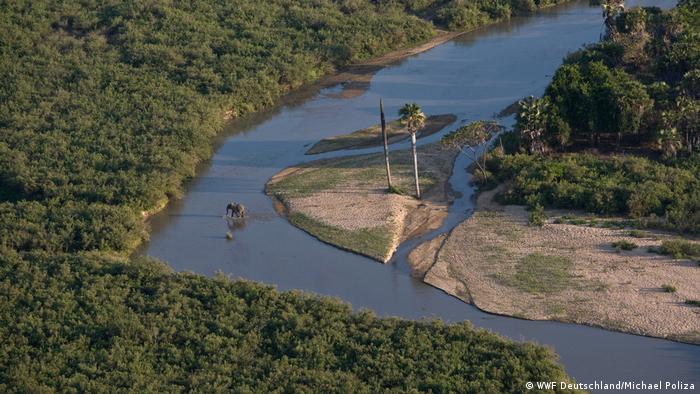 TANZANIA - Construction has begun of a mega dam to improve power supply throughout the country. There are fears this could herald the end of the Selous Game Reserve. In the Selous Game Reserve in southern Tanzania, construction work has begun in earnest on a controversial hydropower plant. Earlier this month, Energy Minister Mesard Kaleman announced that preparations had been completed and the two Egyptian companies awarded the contract could now go ahead with building the dam on the Rufiji River. To build the dam, the future flooding area must be freed of all vegetation. That's an area that far exceeds 1,000 square kilometers. The consequences would be devastating, Johannes Kirchgatter of the World Wide Fund For Nature (WWF) says. Along with the dam, roads and settlements would also be created in the reserve area and the whole region would become industrialized. Outside the reserve, downstream, the consequences would also be dramatic. There would be no more flooding as in the past to supply the mangrove swamps in the river delta with sweet water and protect the coast. Fishermen in the delta could suffer if it dried out. READ MORE Can Africa tap into 'debt-for-nature' plan to protect its forests? AFRICAN CONTINENT - African countries may want to explore the opportunities presented by a recently-passed United States law that offers cuts in debt obligations to eligible nations that commit to channel the saved funds to protect their critical forests and coral reefs. The Tropical Forest Conservation Reauthorization Act (TFCA) has reactivated a “debt-for-nature swap” program, that has generated the equivalent of $339 million in local currencies since 1998 to protect 67 million acres of forests in 14 countries. The law creating the program had lapsed in 2014 but was reauthorized early this year. Amid heightening rates of deforestation and limited conservation budgets in many parts of Africa, the TFCA program has the potential to unlock supplementary resources for countries on the continent to protect their key forests and coral reefs. The latest version of the TFCA law includes coral reefs. It is well-known that two-thirds of coral reefs - a crucial natural resource - are threatened with degradation across the globe, including in Africa. Securing them should be a priority since they help to provide food, jobs and protection for almost a half of the world’s population. This also presents additional opportunities for Africa’s 38 coastal states to invest in marine conservation, including mangrove protection and restoration. READ MORE AMERICAS Don’t trash coral reefs for the cruise industry!  CAYMAN ISLANDS - The Caribbean: the name conjures up images of pristine white beaches, crystal-clear water and breathtaking coral reefs. The Cayman Islands are a first-rate destination for scuba divers – most would agree that the name “Eden Rock” is quite fitting for the territory’s most famous reef. Yet the local government seems oblivious to the ecological treasure just off its coast: it wants to ramp up mass tourism by dredging the reef and building a new port for mega cruise ships. Up to eight cruise ships at a time can anchor outside the port, and visitors are ferried to George Town by tender vessels. Lately, however, cruise operators have been threatening to only call at ports that can accommodate their mega ships – vast floating resorts with thousands of passengers. Apparently worried about a loss in revenue from mass tourism, the local government is ready to bow to the will of the corporations. To sweeten the deal, cruise operators have made financial commitments to help cover the costs of the project. The ecological damage to the Cayman Islands? Not their problem. READ MORE Marine Resources Council To Host ‘Mangroves Matter’ on Saturday, July 20 USA - The Marine Resources Council will celebrate International Mangrove Day by hosting “Mangroves Matter,” a free event set for Saturday, July 20 from 9:30 a.m. to 2 p.m. The Marine Resources Council Science, Education, and Mangrove teams will be on hand to answer mangrove and lagoon questions. The event will feature a delicious menu from Coastal Crab Company, live local musicians, along with a mangrove donation and planting drive. This festivities will take place at Marine Resources Council’s Ted Moorhead Lagoon House Learning Center at 3275 Dixie Hwy NE in Palm Bay. This celebration helps raise awareness and funds to restore the Indian River Lagoon. Educational presentations include a rain barrel workshop, mangrove propagule collection contest, artisan rain barrel auction, silent auction, prizes and more. READ MORE Mangrove forests, our first line of defense against storm surge 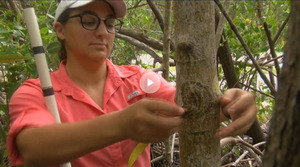 USA – Florida Gulf Coast University (FGCU) grad student Gianna Diaz is researching to see how human activity and nature is affecting mangrove forests. She's measuring the size and age of mangrove trees and counting how many baby mangroves are growing in forests from Sarasota to Marco Island. "When we understand that mangroves are critically important, we want to understand what the future looks like for mangroves, how these stressors may influence their ability to persist in the landscape," Dr. Win Everham, a professor at FGCU's water school, said. They're checking different sites to see how hurricanes affect the forests' health. She is also studying the impact of man-made features, like roads, that cut through forests. "We cut through a mangrove system, and we can restrict the ability for the tides to flush the system, in ways we don't fully understand yet. That flushing is important to the long-term health of these forests," Dr. Everham said. READ MORE ASIA Heritage site status for Coringa mangroves likely INDIA - The government has begun the process to get UNESCO’s World Heritage Site status for Godavari Mangroves at Coringa Wildlife Sanctuary, near Kakinada, touted to be the second largest mangroves in India. The Environment, Forests, Science and Technology (EFS&T) Department has constituted a seven-member committee for fulfilment of norms required for proposing the Godavari Mangroves (mada forests), at Coringa, as World Heritage Site, according to a GO issued for the purpose. The sanctuary has an 18-km-long sand pit where olive ridley sea turtles nest from January to March every year. There are 24 tree species in the mangroves. The committee is likely to submit its report in two months for declaring Godavari Mangroves, at Coringa, as World Heritage Site to the UNESCO. Once the Coringa sanctuary gets the heritage site tag, UNESCO will help develop tourism and protect the wildlife in the mangroves. READ MORE Sabah’s mangroves in danger MALAYSIA - Mangroves are important to Sabah but undervalued and in danger, said Head of Conservation Sabah WWF M’sia Dr Robecca Jumin. “Sabah has the largest area of mangroves of any state in Malaysia, with over 232,000 hectares, mainly along Sabah’s east and southeast coast. Most are protected as Class V Mangrove Forest Reserves, or as Class 1 Protected or Class VI Virgin Jungle Forest Reserves. “However some critical areas, for example on Sabah’s west coast, remain unprotected. “While Sabah should be proud to host two wetlands recognized as being of global importance and designated as Ramsar sites – the Lower Kinabatangan-Segama Wetlands, and Kota Kinabalu Wetland right here in the capital, other parts of Sabah’s mangrove areas are decreasing or being degraded”, Dr Jumin said, in conjunction with World Ocean Day.Despite their immense value, mangroves are in constant danger of being damaged and disrupted by infrastructure like roads, hotels and housing developments, shrimp farms and fish farms, and to a lesser extent from being cut for firewood, charcoal and posts. Pollution, including oil spills and sediment, and rubbish like plastic garbage, are also major threats. And the threat is not only from clearance: disruption of river and tidal flows can destroy mangroves and the fisheries and life that they support. READ MORE Vanishing mangroves a cause of concern INDIA - Never before did Kerala turn so conscious about its depleting green cover than in the wake of the recent flood. The deluge and its aftermath woke us from a deep slumber, triggering studies and debates about how the vanishing green could prove extremely detrimental. In that context, the focus naturally shifts to mangroves, the perfect weapon to combat climate change, lessen the impact of storms and preserve marine wealth. However, the district, home to 13 true mangrove species, is witnessing a decline in its cover. According to studies, there is a sharp decline in species abundance and diversity of the plants and associates. Though the present area of mangrove cover in the city is 396 hectares, Avicennia marina, one of the abundantly found species in other parts of Kerala, is on the verge of extinction here. “Avicennia marina is found abundantly in other parts of the state but we see a sharp decline here. READ MORE OCEANA Mangrove tree on cattle property carbon dated as more than 700 years old  AUSTRALIA - The expression "farmers are the original environmentalists" gets thrown around a lot in regional Queensland. The expression refers to the ecological management skills those working the land have and how if they mistreat it, they are putting themselves out of a job. Queensland cattle farmer Lindsay Titmarsh proves that behind every saying there is some truth. Mr Titmarsh tends to the vast property with the same care and attention as a cottage garden might receive. He could walk you around the farm for days telling stories about the animals and plants that cohabit with his family and he has even published several books about the region. But of the thousands of trees on Tandora Station, a certain grey mangrove, or Avicennia marina, caught Mr Titmarsh's eye and he instantly knew there was something special about it. Carbon dating has estimated a grey mangrove tree on a Queensland cattle station is 738 years old. Until recently, it was believed the grey mangrove, a common species on coastal mainland Australia, lived for up to 200 years. Professor Norman Duke is a mangrove ecologist and botanist who has named about 10 per cent of the world's mangrove population in his 40 years of study. "This is the oldest [mangrove] tree we know about in Australia and probably the world ranking in that respect," Professor Duke said. READ MORE |
ACTION ALERTSDon't trash coral reefs for the cruise industry! - TAKE ACTION
|
Mangrove Action ProjectClick here to view past newsletters |
|
Search News Archive
Saturday, June 22, 2019
MAP NEWS Issue 471 - June 22, 2019
Saturday, June 8, 2019
MAP News Issue 470 - June 8, 2019
|
The MAP News
470th Edition June 8, 2019 |
|
FEATURE Marvellous Mangroves in Coronie, Suriname  SURINAME - In early May, two dozen students from Anton de Kom, University of Suriname spent three days of intense activity learning all about Marvellous Mangroves in the town of Coronie on the coast of Suriname. Led by MAP’s Education Director, Martin Keeley, the workshop was co-sponsored by MAP, WWF and SORTS, and used the Marvellous Mangroves in Suriname teachers resource guide as a basis for its information and activities. The MM guide was first introduced to teachers and students in Coronie 2016 and since that time has been part of an extensive program given in the communities of Nickerie, Commenwije, Coronie and Galibi. Representatives from organisations ranging from eco-tour guides from the United Tour Guides of Suriname (UTGS) to government Game Wardens and trainee teachers plus several schools have since taken the program. The students from Anton de Kom University represented four different disciplines – Economics, Environmental Science, Mining and Agriculture/Forestry – the first time this kind of inter-disciplinary ecological training has taken place in Suriname. Ms. Joan Telgt of the Mangrove Forum, Surinam, who helped to organise the group says the inter-disciplinary exposure is essential for students to fully understand ecological systems and the way they function. READ MORE AFRICA Makoko: the fishing community running out of fish  NIGERIA - There is a legend about the neighbourhood of Makoko. It holds that birth in the “world’s largest floating slum” is celebrated by the father throwing his newborn into the Lagos lagoon. If the infant floats it is embraced by all. A baby that drowns is illegitimate and its mother must be banished from the community. “But all babies float,” is a refrain you hear, often accompanied by a mischievous smile. Although a terrifying myth, it defines the lagoon’s importance as the linchpin of life in Makoko, where residents eke out a living from the polluted waterway snaking through Africa’s most populous city of around 20 million people. On a cloudy Monday morning, Jacob Lodun, 20, readied his boat for a 12-hour slog on the water. A fisher born in Makoko, this has been Lodun’s daily routine since he was nine. Back then he and his father would return home from a trip with scores of catfish and a heap of smaller species. Some would be cooked up in pepper soup while the rest went to early morning markets. “Now we don’t get any fish to kill,” he said. “The fish are running further away.” Sat in a dugout canoe with no outboard engine, he is unable to chase them. READ MORE AMERICAS Equator Prize 2019 winners announced for local innovative climate solutions  USA - The UN Development Programme (UNDP) and partners announced today the winners of the 10th Equator Prize, recognizing 22 local and indigenous communities from across the world. The winning organizations, which showcase innovative, nature-based solutions for tackling climate change, environment, and poverty challenges, will be honored at a celebratory gala on 24 September in New York. This is the first time the Equator Prize has been awarded to groups from Guinea-Bissau, as well as to indigenous communities in Australia and the United States. Winners are also based in Benin, Brazil, Cameroon, Ecuador, India, Indonesia, Kenya, Micronesia, Nigeria, Pakistan, Peru, Tanzania and Vanuatu. UNDP Administrator, Achim Steiner stated, “Every day, thousands of local communities and indigenous peoples around the world are quietly implementing innovative nature-based solutions to mitigate and adapt to climate change. The Equator Prize is both a recognition of their exceptional ideas and a way to showcase the power of people and grassroots communities to bring about real change.” The winners were selected from a pool of 847 nominations across 127 countries by an independent Technical Advisory Committee of internationally renowned experts. READ MORE Mexicans turn to ancient Aztec floating gardens to revive mangrove forests 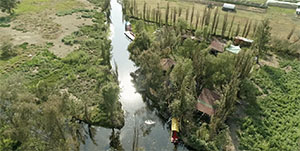 MEXICO - There are few green places to take refuge from the bustle of overcrowded Mexico City. That's why the chinampas — floating islands built more than 500 years ago by the Aztecs — draw so many visitors. At weekends, the canals of Xochimilco in the south of the city, where these floating islands are found, are filled with people in small colorful boats, as mariachi bands and food sellers pass by. But the chinampas serve another purpose. Made from fertile soil collected from the bottom of the city's lakes, they were originally built to grow food. They're still an important source of food today, producing some 40,000 tons of pumpkins, corn and other staples. Now, 500 kilometers (310 miles) away from Mexico's capital, around the port city of Veracruz, some hope this ancient technology will help with another environmental problem. The loss of mangrove forest has left the coast unprotected and open to erosion and storm surges and means sea creatures, such as crabs, no longer have a place to live — that's bad news for fishermen there. Pro Natura Sur, one of the environmental organizations behind the project, hopes planting mangroves on the chinampas will help revive the area's old ecosystem.WATCH VIDEO Brazil's mangroves on the front line of climate change  BRAZIL - Fishermen like Jose da Cruz have made their living for decades hunting for crabs among Brazil’s vast coastal mangrove forests, dense thickets of twisted plants in deep black mud that grow where fresh-water rivers meet the brackish Atlantic Ocean. Cruz, who is known by the nickname Vampire because of his distinctive teeth, doesn’t use a rod and reel or a net. Instead he parks his two-foot-wide boat at the shore of the Caratingui river and wends his way on foot through the tangle of mangroves to dig out crabs with his hands from the dark muck. The four or five dozen he captures in a day will earn Cruz about 200 reais ($50) per week, enough to get by, he said. A battery-powered radio may be his principal connection to the outside world, but Cruz knows about global warming. “Nature is upset. ... In Antarctica, it’s melting, nature is melting,” he said. “People, you have to have some awareness about what is happening. It’s clear what is happening.” Climate scientists lend credence to Cruz’s interpretation of what he sees. Rising water levels, they say, are a sign of global warming, which also causes water temperatures to rise, killing off some marine life. READ MORE ASIA The war widows protecting Sri Lanka's mangroves 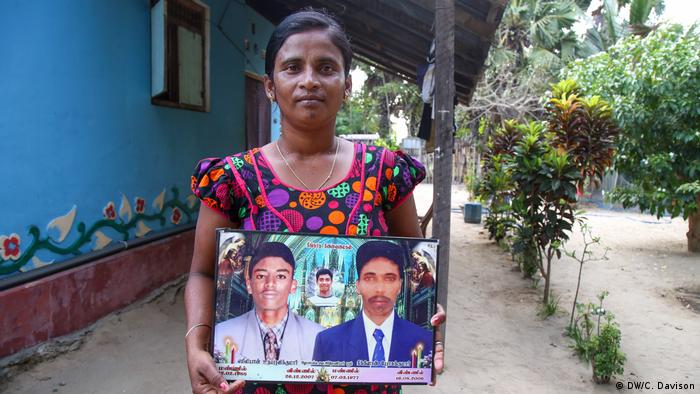 SRI LANKA - Sri Lankan women who lost husbands in the country's 25-year conflict are now protecting the country's mangroves — and combating gender stereotypes in the process. Like many other women in her village of Anphoniyarpura, and across the district of Mannar in northern Sri Lanka, 35-year-old Ushanthini Jesukumar relies on prawns and fishing for her primary source of income. Finding work can be a struggle, says Ushanthini, as rigid ideas about gender typically confine women here to the domestic sphere. "As widows, we face a lot of opposition if we go out to work," Ushanthini told DW. "People will talk badly about us."The women have not let themselves be deterred. Prawn catching is also more socially acceptable because it allows the women to find work in their village — not too far from home. Now, the mangrove lagoons that provide a breeding ground for the prawns and small fish they rely on are under threat. According to a joint global report by the World Wide Fund for Nature (WWF) and the International Union for Conservation of Nature (IUCN), "mangroves are being destroyed at rates three to five times greater than average rates of forest loss, and over a quarter of the original mangrove cover has already disappeared” READ MORE Indian women start their own business to save mangroves 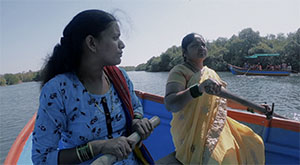 INDIA - In India, fishermen's wives are successfully challenging age-old traditions of patriarchy and gender stereotypes. Instead of waiting for their husbands to bring home fish, they've taken the oars into their own hands. They've become tourist guides and mangrove experts, earning their own living while helping to save the biodiversity of their environment. WATCH VIDEO Maldives faces elevated risk of coral bleaching 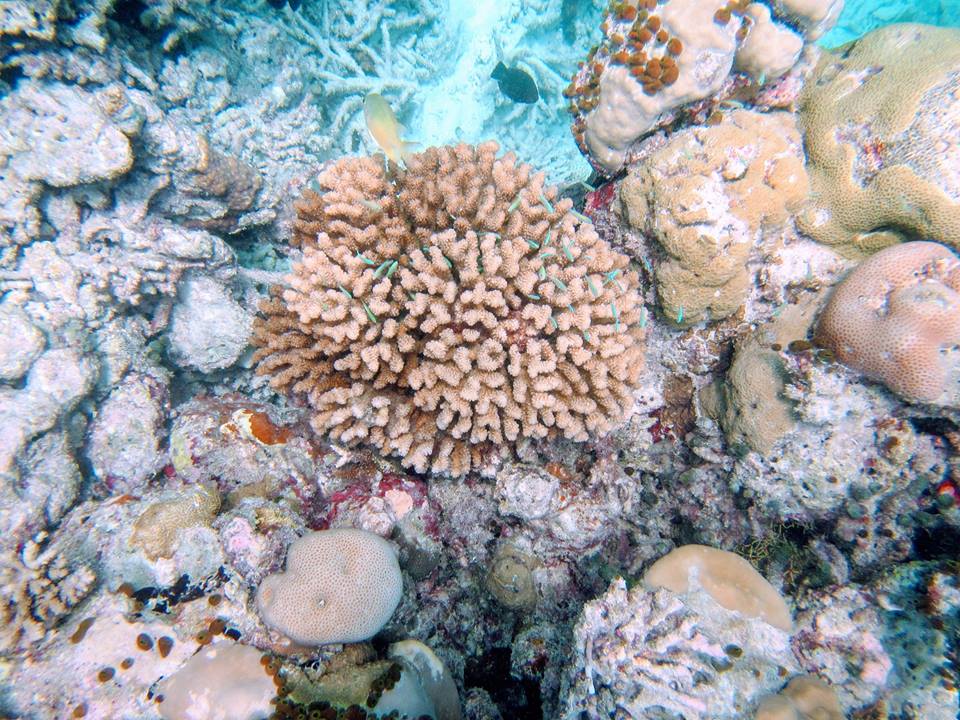 MALDIVES - Rising ocean temperature is accelerating coral bleaching in the Maldives, the Marine Research Center has warned, advising the government to suspend projects that affect the health of reef ecosystems. The MRC said in a statement that the Maldives has been classified at the ‘watch’ level by a satellite monitoring programme of the United States National Oceanic and Atmospheric Administration, which categories regions by No Stress, Watch, Warning, Alert Level One and Alert Level Two.“Coral bleaching status of Maldives could jump to warning level and even to Alert Level One in some parts of the country,” the centre warned. “Human activities may contribute a slower recovery of bleached corals. Activities such as dredging, land reclamation and beach nourishment projects, which are done at very large scale in Maldives, is damaging the environment of the coral reefs.” READ MORE Four poachers shot dead in Bangladesh mangrove gunfight  BANGLADESH - Four people accused of poaching threatened Bengal tigers were shot dead by Bangladesh police on Wednesday during a gunfight in a mangrove forest, officials said. Rapid Action Battalion (RAB) police challenged armed men on a boat in the Sundarbans, the world's largest mangrove forest, spokesman Mizanur Rahman said. The poachers opened fire sparking the battle, Rahman told AFP. Four bodies, guns and ammunition were found on the boat. The four were identified as members of a gang accused of poaching in one of the largest habitats for endangered Bengal tigers and Irrawaddy dolphins, local RAB official Tajul Islam told AFP. "These gangs have become a major threat to wildlife conservation," in the mangroves, Islam said. The Sundarbans, much of which is a UNESCO world heritage site, is swarming with people accused of murders and abductions as well as poaching. READ MORE EUROPE Summoners War 5th Anniversary Special! Let's Build A Mangrove Forest Together!  GERMANY - Com2uS announced that Summoners War has started a global CSR event so that players of the hit mobile game can participate in the celebration of its 5th anniversary. This worldwide event is a CSR project designed to present a healthy environment to future generations. Users across the world will participate in the event to collect Donation Fruits. When the total number of Donation Fruits reaches 50 million then Com2uS will make a donation to the Korea Green Foundation to support global environment improvement. The donation will be used to create and preserve a mangrove forest for future generations to live in a healthier environment, prevent global warming and help towards restoring the ecosystem. READ MORE GLOBAL More mangroves? Economies recover faster after tropical cyclones 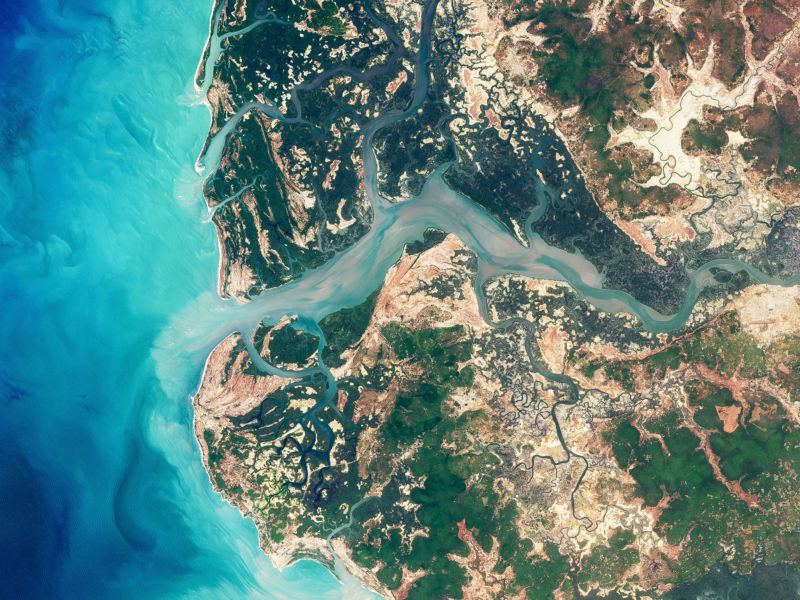 GLOBAL - A new study led by East Carolina University’s Jacob Hochard compared the economic impacts of tropical cyclones around the world with satellite data.To get a global perspective on the role of mangroves, researchers quantified two things: mangrove extent along coastal communities and economic activity. A global, high-resolution mangrove map allowed the researchers to calculate a standardized swamp width by dividing mangrove area by the community’s coastline length. For example, the average extent in their analysis of 23 countries' sea coasts was 6.3 meters of mangrove per meter of coastline. Measuring economic activity requires a little more ingenuity, as you can’t just look at reported statistics for many of these countries. Fortunately, the intensity of nighttime lighting in any location is easily determined from space and has been shown to be a reliable indicator of economic activity. Basically, if an area is doing well economically, there will be more lights on at night there. To find out how well mangrove swamps protect nearby communities, the researchers measured the change in lighting for the years after a tropical cyclone made landfall. They compared communities with the average mangrove extent and above-average communities at the 68th percentile (one standard deviation above the mean). Instead of about 6 meters of mangrove buffer, these communities had about 25 meters of mangrove. READ MORE Scientists for study on impact of microplastics on mangroves 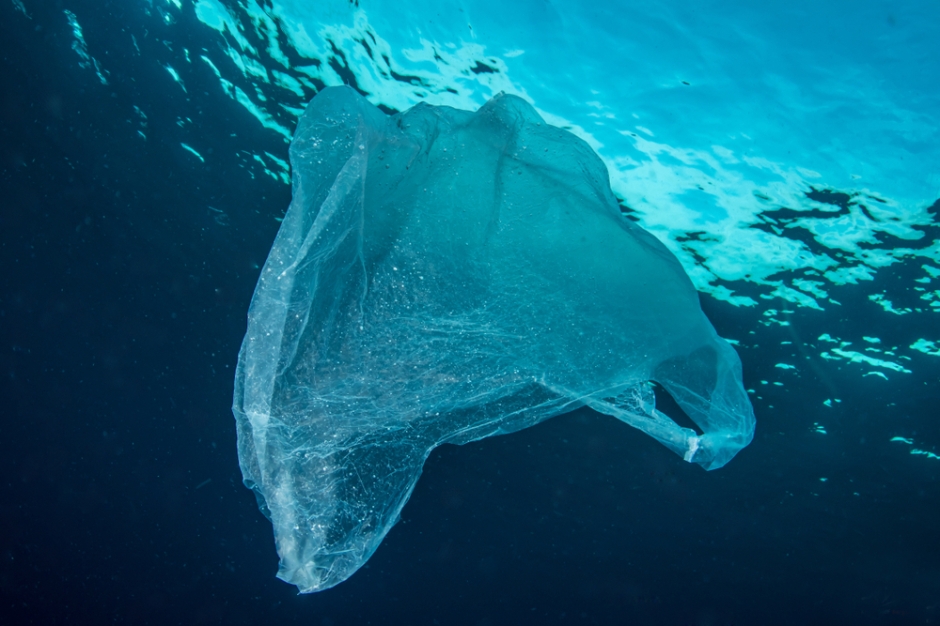 GLOBAL - Scientists have underlined the need to conduct a detailed study on the impact of microplastics on the mangrove eco-system in the country, as it is believed that these tiny plastic particles can adversely affect marine life. As far as Goa is concerned, the previous studies by the CSIR-NIO (National Institute of Oceanography), located near Panaji, had confirmed the presence of microplastics along the coastline in the famous tourist destination. Researchers feel that studies can be done in selected sites like the Zuari, Mandovi, Chapora, Terekhol, Talpona and Galgibag rivers and in Salim Ali bird sanctuary near Panaji. Microplastics, measuring less than five mm, come from a variety of sources including larger plastic debris that degrades into tinier pieces. These small particles can easily pass into sea and other water bodies, posing a potential threat to aquatic life. "It is important to know what type of microplastics are accumulated in the mangrove sediments and sediment-related flora and fauna, and their sources in abundance.READ MORE |
ACTION ALERTSSea turtles or condominiums?
|
Mangrove Action ProjectClick here to view past newsletters |
|
-
The community of adults and youth in Cayman Islands has come together recently to release a series of educational videos. Each is geared to...
-
By Alfredo Quarto, Program & Policy Director Co-founder, MAP There is a rather urgent situation concerning the bio-invasion of the Son...
-
By: Isabel Robinson, MAP Volunteer Intern Some months ago I decided to come to Thailand and do an internship in mangrove conservation, ...
MAP News Issue #596 = April 20, 2024
ENTRIES NOW OPEN! Mangrove Photography Awards 2024 10 Years Celebrating Mangroves GLOBAL - MAP has launched our 10th Mangrove Photograp...




